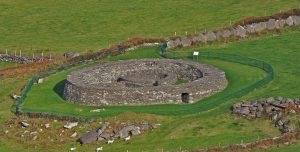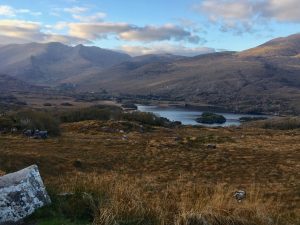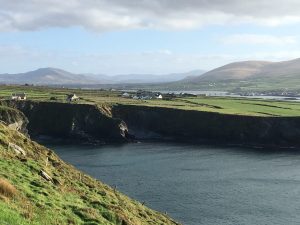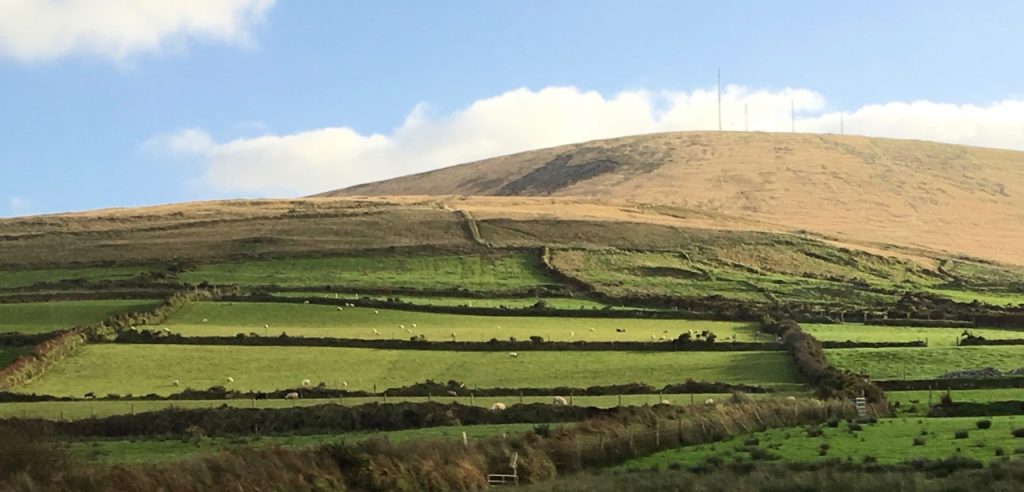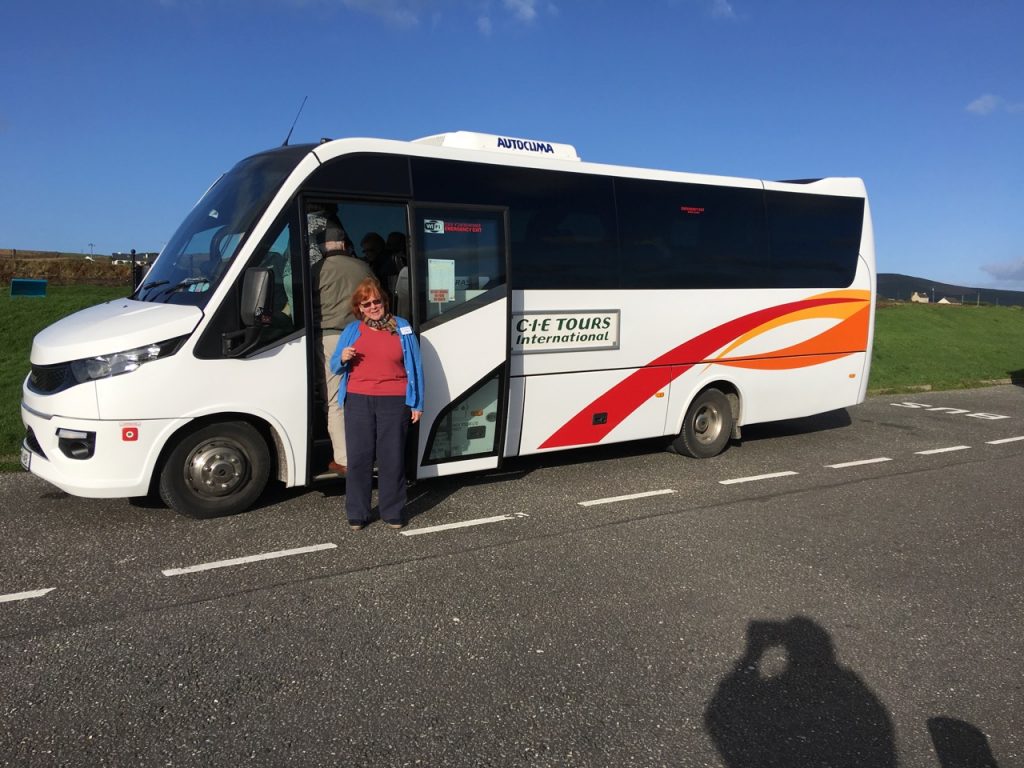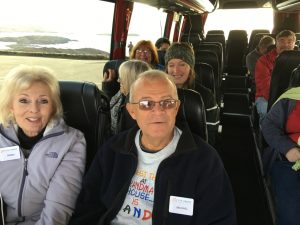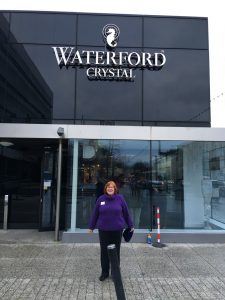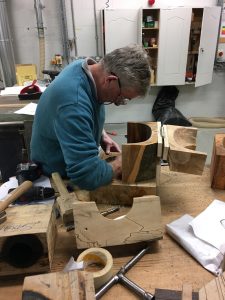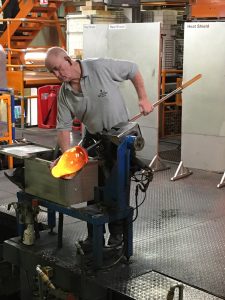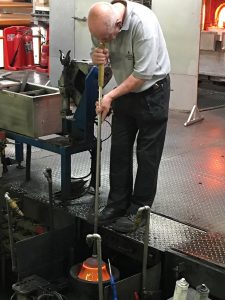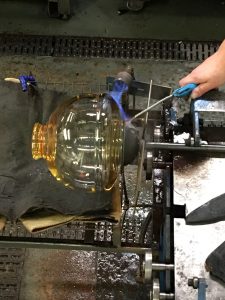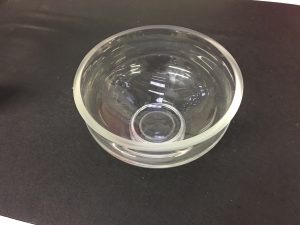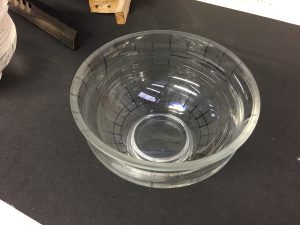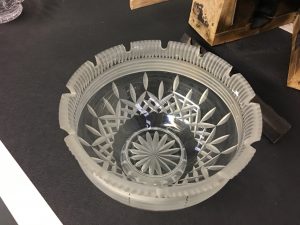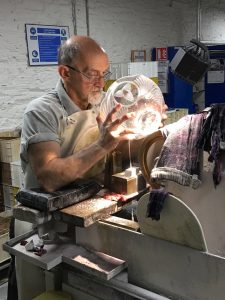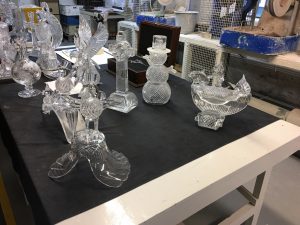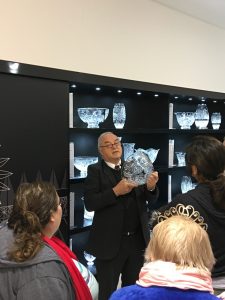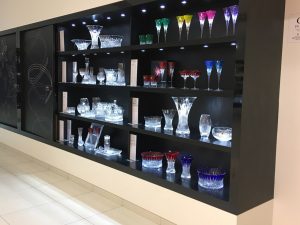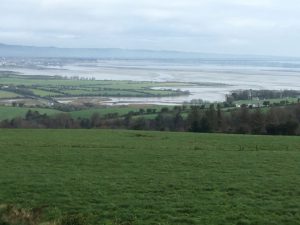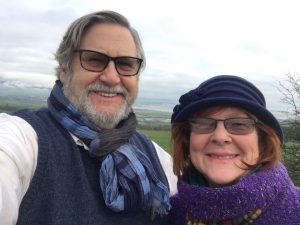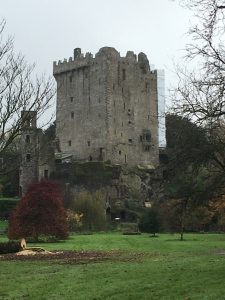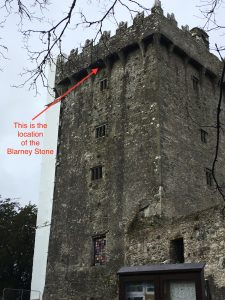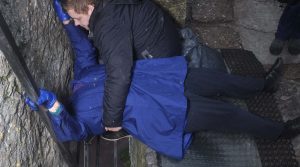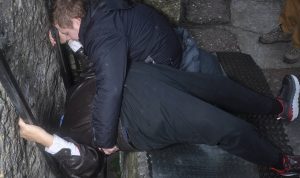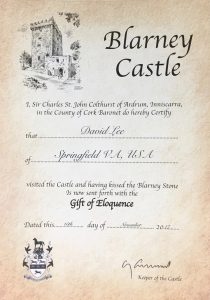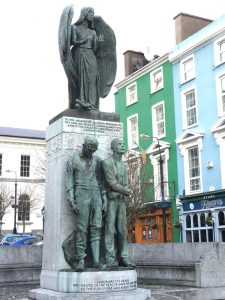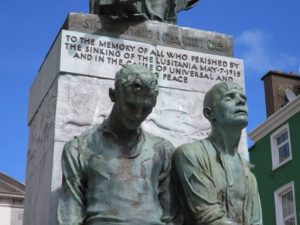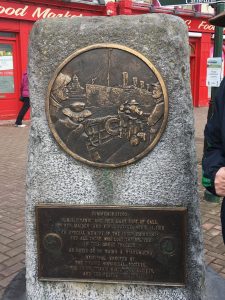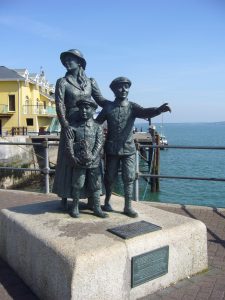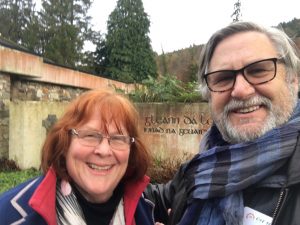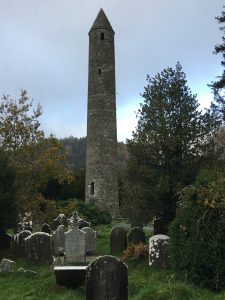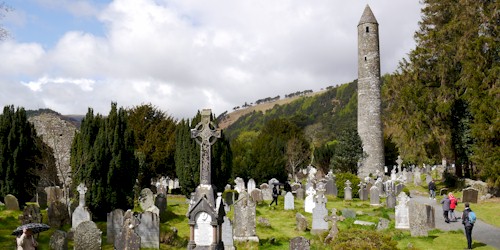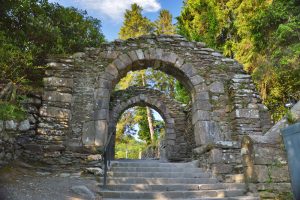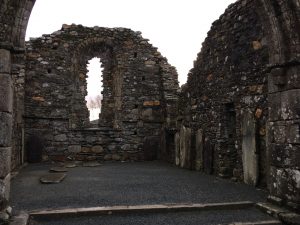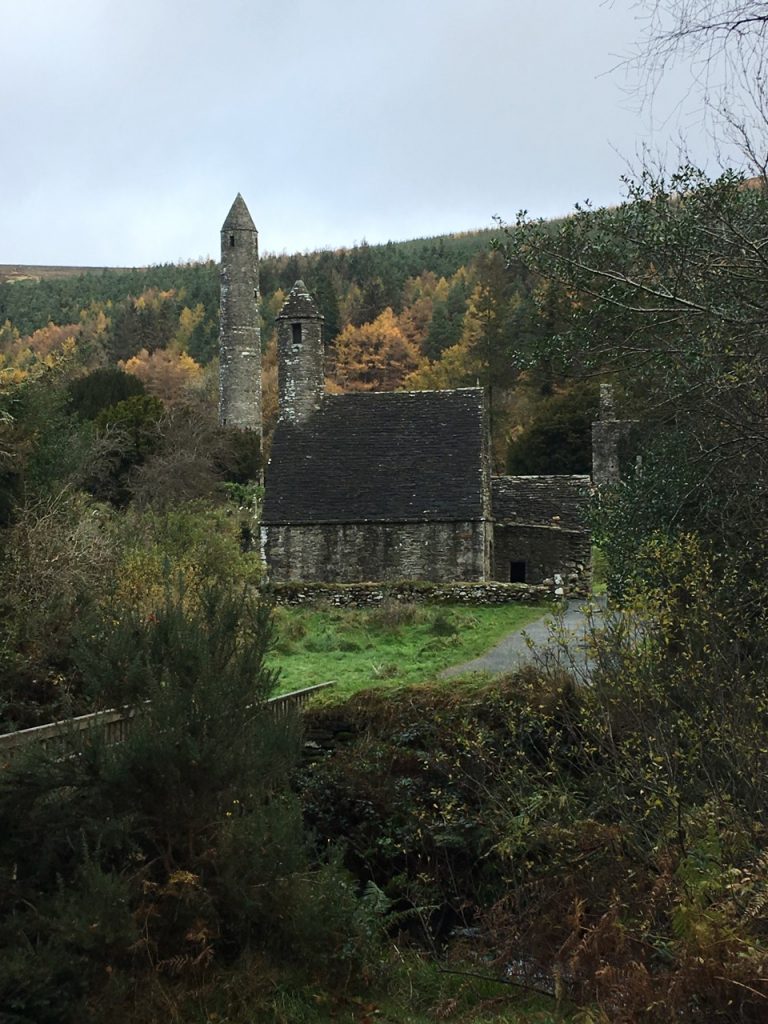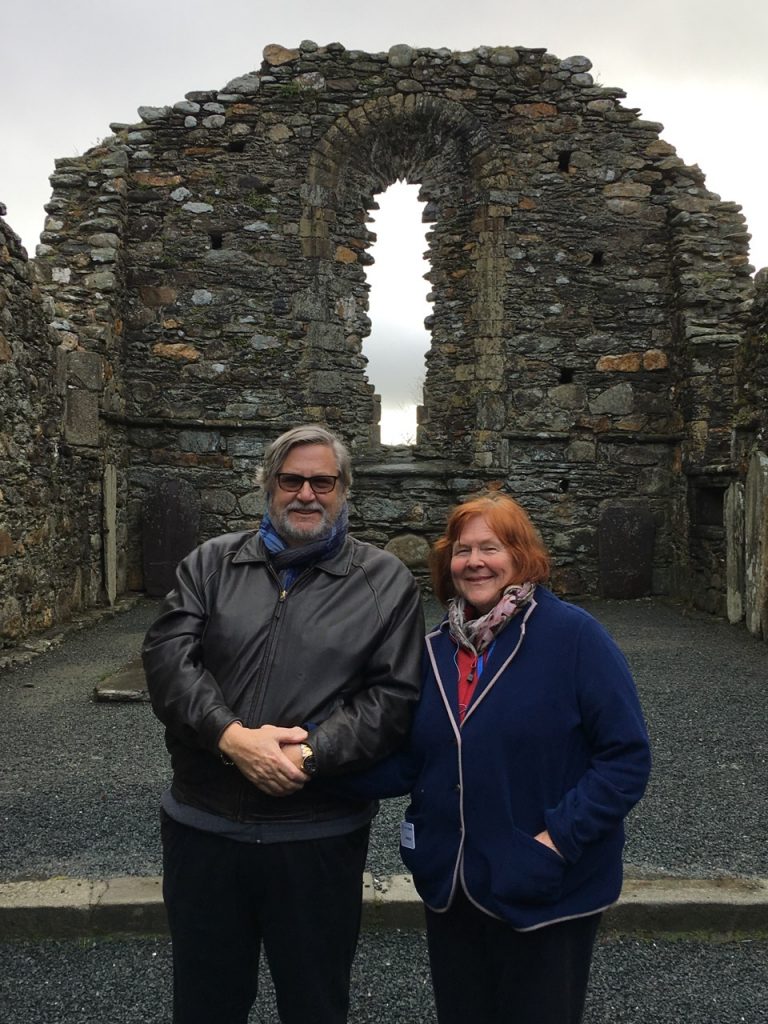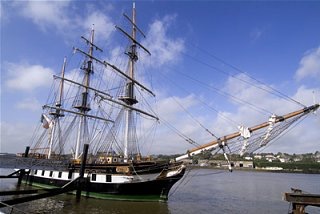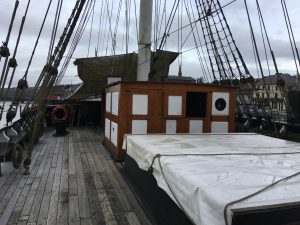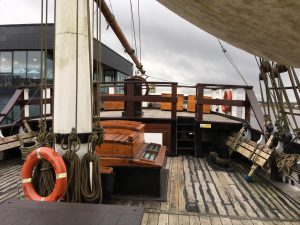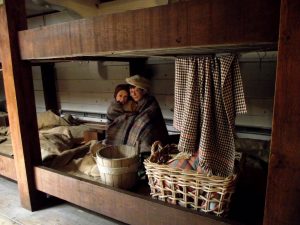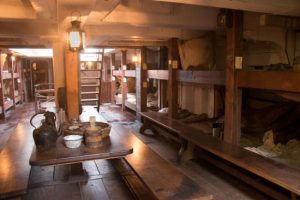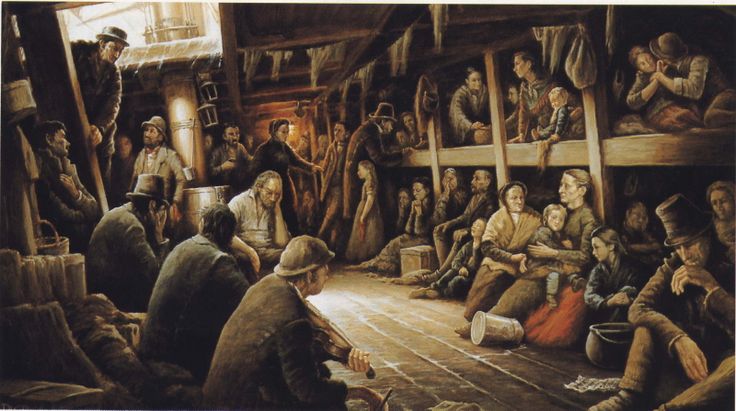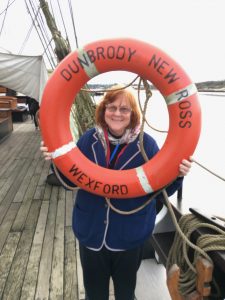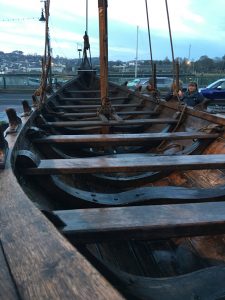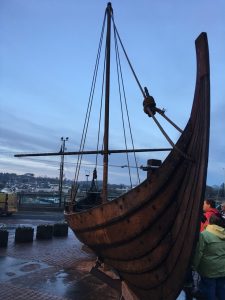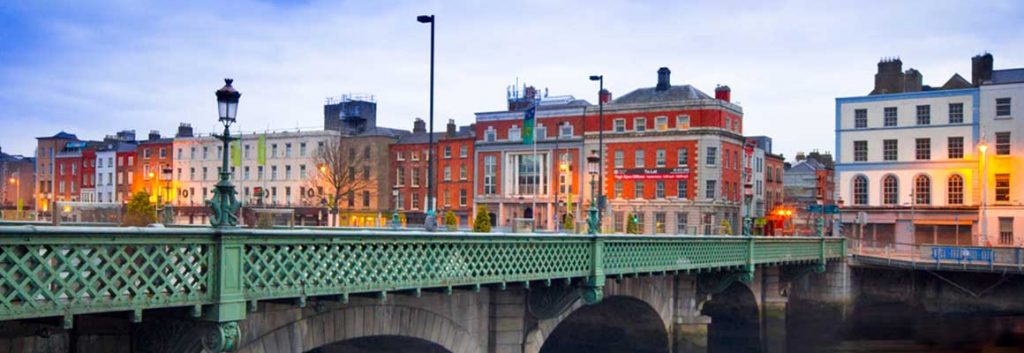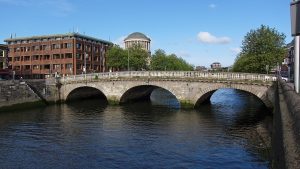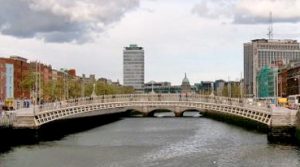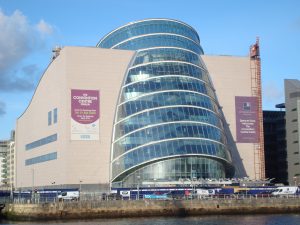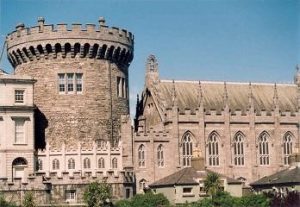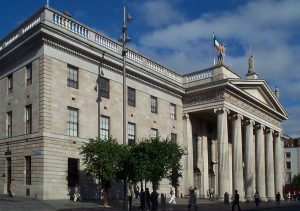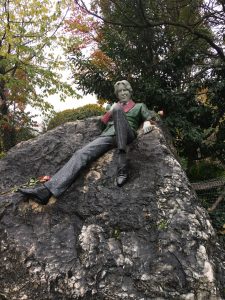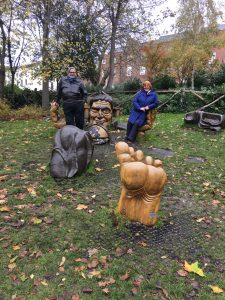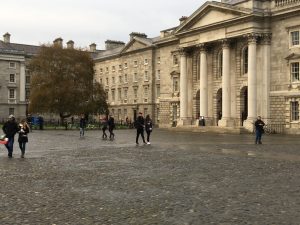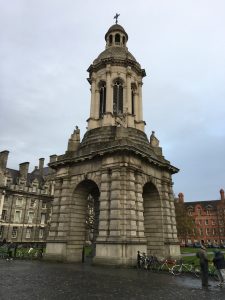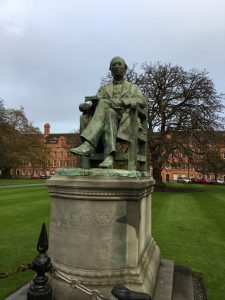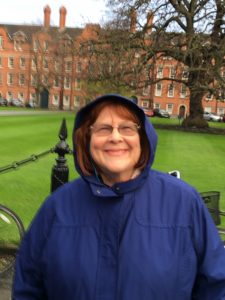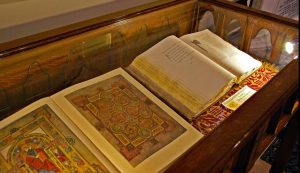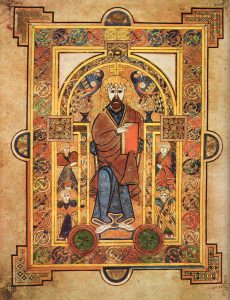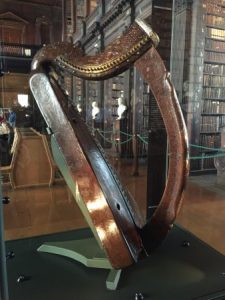Up and out early in the morning, as we had a ferry to catch.
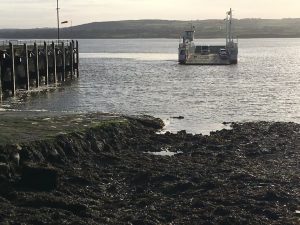
The car ferry was taking us from Tarbert across the river to Killimer. It saves only a half hour on the trip but makes it much more interesting.
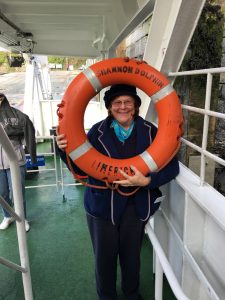
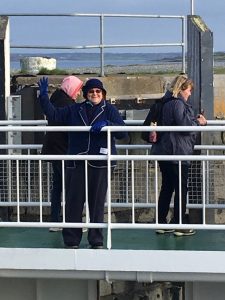
Once across the river, we drove through several small towns. One of them had a mural depicting how owners would evict their tenants who refused to move when told to leave.
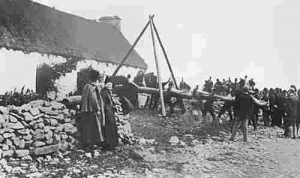
Beyond trying to smoke them out by plugging their chimney with straw, they would have a battering ram contraption that they would set up to destroy the door. Not good times for sure.
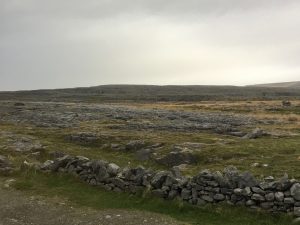
Driving along, the landscape became increasingly barren. In some areas there is virtually no soil – it has all been washed away and just the limestone is left standing. The houses all have to be protected from the raging Atlantic storms that roll through. In many cases they have extra construction at the edges of the roofs to keep the wind from getting under the edge of the roof tiles and blowing them off. Clearly a hardy bunch makes their homes in these areas and they are few and far between.
We stopped at St Bridgid’s Well a holy well believed to be blessed by St Bridgit of Kildare, a 5th century Irish saint from the area and the only female patron saint of Ireland.
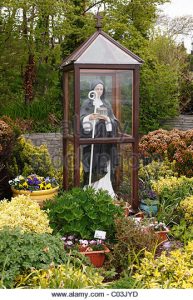
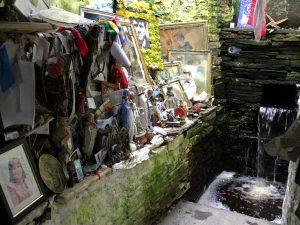
This is one of the most visited Holy Wells in Ireland and people have been visiting for centuries. Inside the structure are literally hundreds of prayer cards, photographs and related items people have left over the years.
Next stop, the Cliffs of Moher. The Cliffs of Moher are one of Ireland’s most visited national attractions with a magical vista that seems to capture the hearts of up to one million visitors every year.
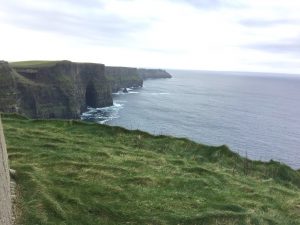
While it is spectacular, it didn’t quite capture my heart but I’m glad we stopped. The Cliffs rise 214 m or about 700 feet at the highest point and range for 9 kilometers or 5 miles over the Atlantic Ocean on the western coast.
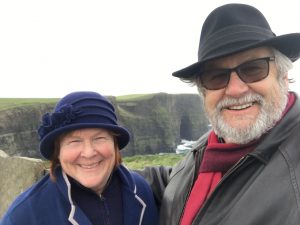
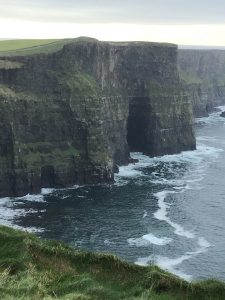
We walked through the display and up to one of the major viewing points along the cliffs and braved
the winds and chill of the Ocean air. It was clear enough to see the Aran Islands in the distance. Lovely.
We ended our day in Galway, home of the Claddagh Ring – that is a traditional Irish ring given which represents love, loyalty, and friendship, and Spanish influence from all the trading being done with the City.
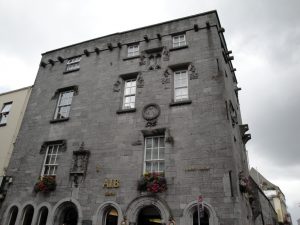
Lynch Castle (now a bank building)was the setting for a Father /Son tale of economy and justice. The local lord and justice of the peace, Lynch, fostered the eldest son of a Spanish merchant who wished to trade with the merchants of Galway. He was to learn the culture of Ireland, and act as guarantee that the Gomez family would redeem him and continue trade in good faith. Unfortunately, he fell in love with the Lynch son’s sweetheart and stole her heart. The Lynch son knifed him, threw him in the river and laid low. The tides brought the body back, and the deed was attributed to Lynch’s son. The local council thought Lord Lynch would choose a scapegoat to send to the scaffold instead of his son. Lord Lynch spent a night before the hanging praying and talking with his son, and when the son rose, shoved his son out of the top windows of the castle on a hangman’s rope. And so, said our guide Brian, came about the concept of a “lynching”. A good story by a great story teller, the only thing needing lynching in Galway now is the McDs, but that is just my opinion.
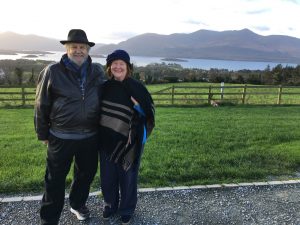
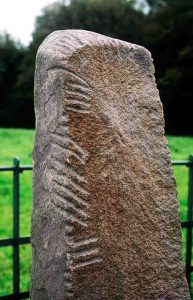
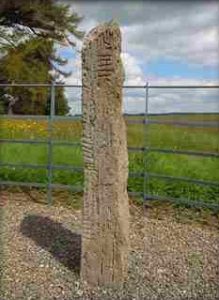
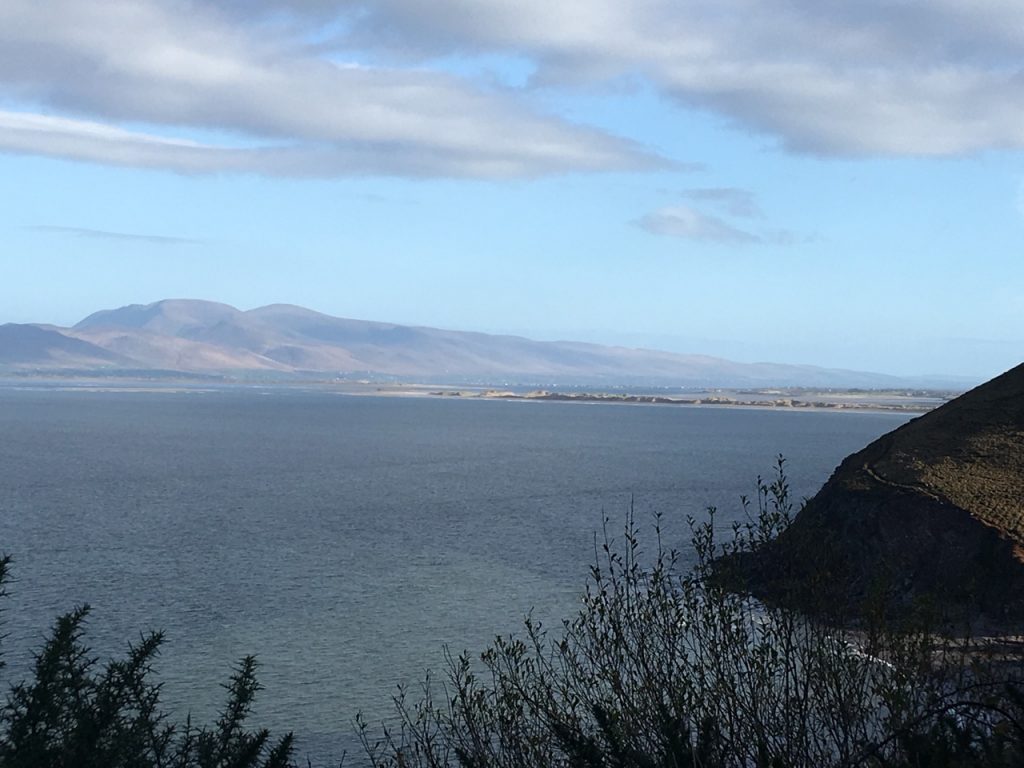
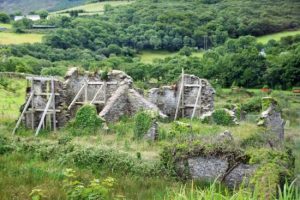
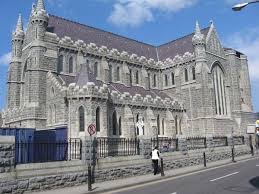
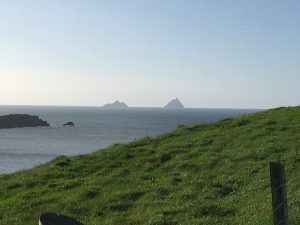
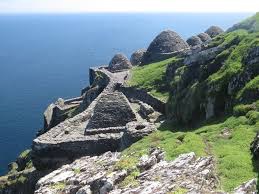
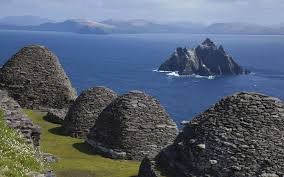
 They have a t-shirt for sale with Luke holding a Guinness with R2D2 next to him with the typical bird that lives on the island. Didn’t but the t-shirt needless to say.
They have a t-shirt for sale with Luke holding a Guinness with R2D2 next to him with the typical bird that lives on the island. Didn’t but the t-shirt needless to say.